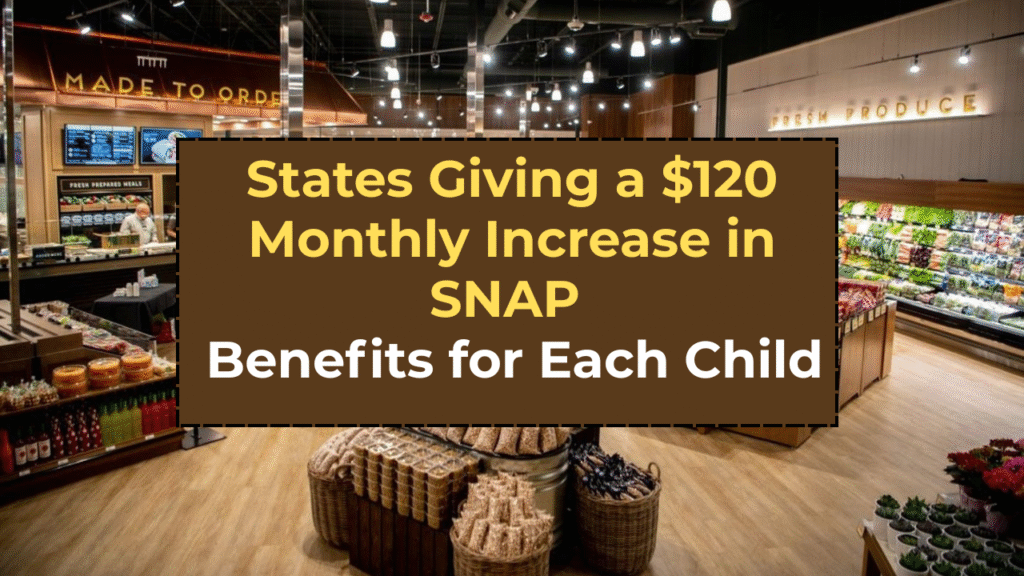In recent years, Supplemental Nutrition Assistance Program (SNAP) benefits have become a crucial support for millions of families across the United States. A key development that has caught the attention of many is the implementation of an additional $120 monthly boost per child in some states. This article explores which states are offering this benefit, what it means for families, and how SNAP continues to evolve to meet the needs of children and families nationwide.
Understanding SNAP and the Child Boost
The Supplemental Nutrition Assistance Program, commonly known as SNAP, provides nutritional assistance to low-income individuals and families. The program aims to alleviate food insecurity by helping beneficiaries purchase healthy food.
As part of efforts to support families during times of economic uncertainty, several states have introduced an enhanced benefit of $120 per month for each child eligible under SNAP. This child boost is intended to help families meet rising food costs and improve the nutrition and well-being of children.
States Offering the $120 Monthly Child Boost
Not all states have implemented this boost uniformly. States have discretion in how they administer SNAP benefits, within federal guidelines, which has resulted in a patchwork of different benefit levels.
Currently, a number of states have incorporated the $120 per child boost into their SNAP benefits. These states include:
- California
- New York
- Illinois
- Massachusetts
- New Jersey
- Washington
- Oregon
- Connecticut
These states have recognized the urgent need to provide additional support to families with children, especially in light of inflation and increasing living costs.
Impact on Families
The $120 monthly increase can significantly affect a family’s food budget. For example, a family with two children receiving this boost could see their monthly SNAP benefits increase by $240, which can make a meaningful difference in affording nutritious meals.
According to recent studies on food insecurity, the addition of child-specific benefits has helped reduce hunger levels among children in participating states. This improvement is crucial, as childhood food insecurity is linked to poorer health outcomes, lower academic performance, and increased stress.
Federal and State Coordination
The boost is an example of collaboration between federal guidance and state implementation. While the U.S. Department of Agriculture (USDA) sets baseline SNAP rules, states have some flexibility in adjusting benefits to meet local needs.
States that offer the $120 boost have typically done so using federal pandemic relief funds or through state legislative actions aimed at enhancing SNAP.
How to Check if Your State Offers the Child Boost
Families currently receiving SNAP benefits should check with their local SNAP office or state human services department to see if the child boost is available. State websites typically provide detailed information about current benefit levels and eligibility requirements.
What Families Need to Know About Applying or Reapplying for SNAP
For families not currently enrolled in SNAP, or those who want to apply for increased benefits, it is important to understand the eligibility requirements and application process. These often include income verification, household size, and other criteria.
In many states, families can apply for SNAP benefits online or in person at local agencies. The application process is designed to be accessible, and assistance is available to help navigate the paperwork.
Challenges and Future Outlook
Despite the benefits of the child boost, some challenges remain. Not all states offer the increase, leaving gaps in support across the country. Additionally, the sustainability of the $120 monthly boost depends on continued federal funding and state budgets.
Advocates for child nutrition continue to push for nationwide implementation of enhanced SNAP benefits for children, arguing that uniform increases would reduce disparities and better support vulnerable families.
Conclusion
The $120 monthly child boost to SNAP benefits in certain states marks a positive step toward combating child food insecurity. By providing additional resources, these states are helping families afford healthier food options and improve the well-being of their children.
For families interested in learning more about SNAP benefits or the child boost, contacting local SNAP offices or visiting state human services websites can provide the most accurate and current information.

